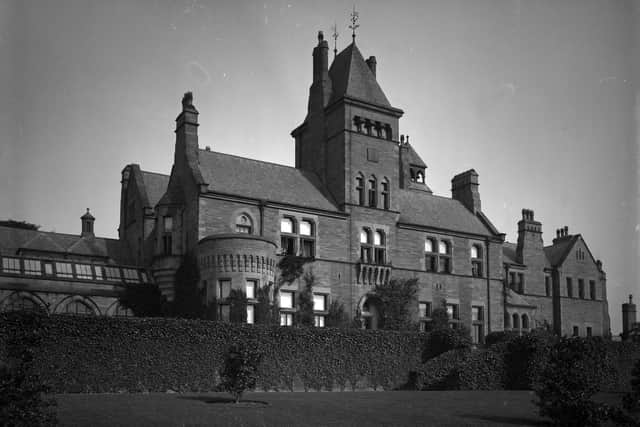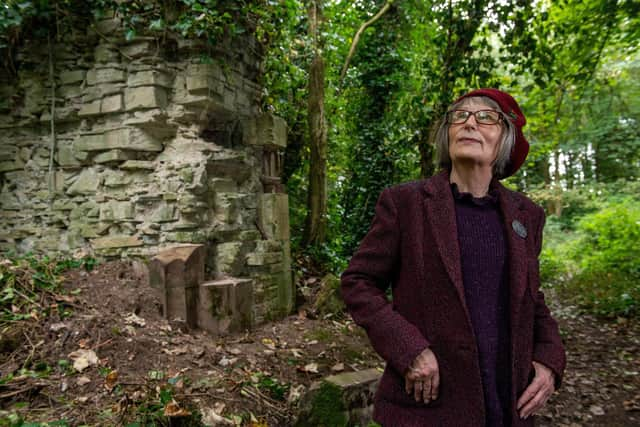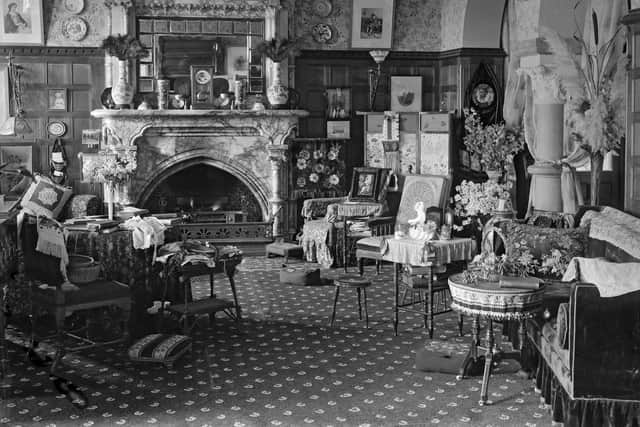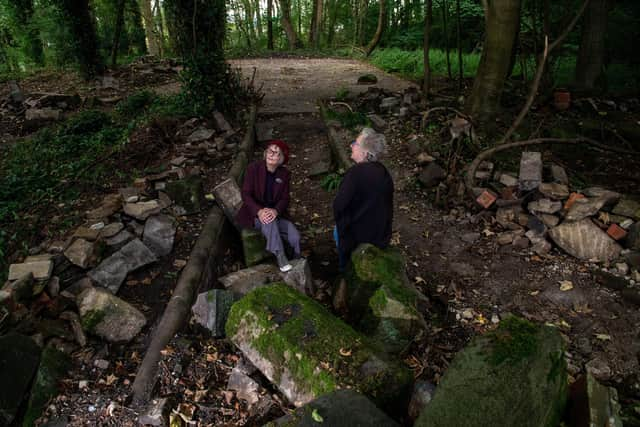Titus Salt Junior's ruined mansion Milner Field resurrected in Frances Brody's new Kate Shackleton Mystery novel
It has been abandoned and ravaged, blown up and pillaged, and now lies in mounds of bricks and stones, chunks of masonry covered in lichen and ivy, but Milner Field, the colossal country house that Titus Salt Jnr built, refuses to disappear completely.
Some believe it is cursed. Author Frances Brody, whose latest novel, A Mansion for Murder, rebuilds Milner Field, does not want to be whimsical … but there is something.
Advertisement
Hide AdAdvertisement
Hide Ad“An ingrained reluctance sometimes stops me saying too much, but I believe that past events leave a memory on the land,” she says. “I bring such a memory into the story - a tale from long ago that’s been passed down through generations. There is also a tragic incident from when the house was being built. Each of these events, centuries apart, would give good reason for the land and the house to be cursed.”


A Mansion for Murder is the 13th of Frances’s popular Kate Shackleton Mystery series. The first, Dying in the Wool, was published in 2009 and each novel is steeped in an enthralling, atmospheric Yorkshire setting, from Leeds and Harrogate to Whitby, Bolton Abbey and the Dales. These are places that Frances, who lives in Cross Gates in Leeds, knows well, researching them for 1920s historical accuracy and taking walking recces.
Last year she published A Murder Inside, the first of her Brackerley Prison Mysteries, partly inspired by Askham Grange Prison near York.
Frances was introduced to the ruins of Milner Field by her friend Lindsay Attree. I joined them for a walk to see what remains, beginning at the bottom of the long driveway to what was once the dream house built by Titus Jnr.
Advertisement
Hide AdAdvertisement
Hide AdReplacing an earlier Elizabethan house, work started in 1869. It took two years to build, in an eclectic, lavish Gothic style, with electricity and a telephone linking to Salt’s Mill. A diary entry by Dr John Deakin Heaton in 1875, reproduced in Milner Field: The Lost Country House of Titus Salt Jnr, describes the house as “a gorgeous mansion within, massive and imposing without”, adding: “We entered a large hall, carpeted with thick Turkey carpets … there is an immense, massive, stone structure forming the fireplace, and there is a large organ in a carved oak case.”


Milner Field became a society jewel, famed for parties and Royal visits - the future King Edward VII and Queen Alexandra visited in 1882 (as did the King’s mistress, Lillie Langtree, in secret). But in 1887 Titus Jnr died of a heart attack in the billiard room, aged 44. His widow, Catherine, mortgaged tand continued to live there, hosting a fancy dress ball to bring out her daughter Isabel in 1895.
The mill’s fortunes declined as more practical fabrics were favoured over Salts alpaca weaves, and the firm went into liquidation. Catherine moved out in 1903 and James Roberts, new managing director of Salt’s Mill, moved in with his wife, Elizabeth.
By the time they left in 1918, they had lost three sons, with a fourth injured in the war. In 1923, another Salts MD, Ernest Gates, moved in, but his wife, Eva, died within weeks and he died soon after of septicaemia, with rumours circulating that the cause was a rusty staircase nail.
Advertisement
Hide AdAdvertisement
Hide AdHis successor, Arthur Hollins, moved in with his wife, Anne, in 1925. In 1926, Anne died of pneumonia, said to have been caused by damp. Arthur died in 1929 aged 51, and the Salts company tried to sell this unlucky house, twice, but no one wanted it. It was closed up and gradually stripped internally and externally, roofless by 1947, and finally deemed unsafe and blown up around 1957, left in piles of rubble, much of which was stolen. But by no means all.


“You can see from the stones how substantial the house was, and how short a life it had,” says Frances.
The mosaic floor of the conservatory can still be seen, as can the remains of the Gothic arched gateway, the cellars and chunks of carved masonry.
In A Mansion for Murder, Frances envisages Milner Field as it might have been in 1930. “It was the year the mansion went up for auction, and I’d reached 1930 in the Kate Shackleton stories, so it was a perfect fit,” she says.
Advertisement
Hide AdAdvertisement
Hide Ad“She has a letter from a young man who works at the mill. There is something he wants to tell her, so she is intrigued and gets the train and follows his directions to the lodge. He is not there to meet her.”


Sharp-witted and glamorous PI Kate is still living in her cottage in Headingley, ably assisted by her housekeeper Mrs Sugden and former police detective Jim Sykes.
Kate is an independent woman with her own means and car (a racy Jowett). Her husband, Gerald, is missing in action, presumed dead. “I do get letters and emails, particularly from Americans, saying ‘find that woman a good man’ and I think, well, if I did, that probably would be the end of it,” says Frances.
During her investigations, Kate stays in the Tower Room, and soon she finds herself embroiled in all sorts of mysterious goings on.
Advertisement
Hide AdAdvertisement
Hide AdIn modern-day real life, Milner Field’s air of mystery remains. “It’s as if it is refusing to go away,” Frances says. “People have tried to get rid of it but it is still here. And people are still looking after it.”
It’s true. A group of local people (there is a Milner Field Facebook group) has been working to uncover the ruins from layers of mud, debris and ivy. They have found rose bushes planted in the 1860s, parts of the masonry and iron and recently unearthed a complete staircase. Milner Field is perhaps allowing some of its secrets to be revealed.
Frances says: “It sounds fanciful to say that the land doesn’t want the house, and the house wants to go on standing, but if writing a novel isn’t fanciful, what is?”


A Mansion for Murder by Frances Brody is published by Little Brown on Thursday, October 20. Frances will be appearing at Salts Mill on that day at 1pm. On October 21 at 6.30pm, she will be at Waterstones Bradford; on October 22 at 10am at Waterstones Harrogate; and at 2pm at Waterstones Leeds. Find out more about the mansion in the book Milner Field: The Lost Country House of Titus Salt Jnr, by Richard Lee-Van den Daele and R David Beale, published by Barleybrook.
